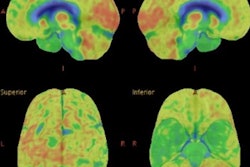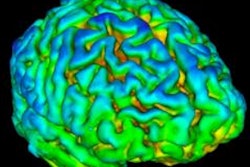Dear Molecular Imaging Insider,
FDG-PET proved superior in a direct comparison with MRI and arterial spin labeling (ASL) for diagnosing and differentiating various forms of dementia, but there remains a need for the latter modality, according to a Belgian study published online on 20 January in the European Journal of Nuclear Medicine and Molecular Imaging.
Two readers achieved higher sensitivity and greater diagnostic confidence with FDG-PET against MRI and a protocol called enhanced multiplane tagging ASL (eASL), which is used to quantify cerebral blood perfusion. Despite the differences, however, the researchers still believe MRI with eASL can play an important role in dementia diagnosis.
In other news, researchers at the European Organization for Nuclear Research in Geneva have placed new limits on the performance of state-of-the-art systems for time-of-flight PET. Their tests show that the best photodetectors and scintillation materials can achieve a timing resolution far below 100 ps -- a fivefold improvement on standard commercial systems. If implemented in the field, these advances would enhance the quality of PET images, enabling doctors to reduce the dose of radioactive tracer they administer to patients.
Viennese researchers have made an "unexpected" discovery through PET and MRI, finding that women with a malignant tumor in one breast have lower levels of certain biomarkers in the contralateral, healthy breast. By combining the two modalities, biomarkers such as background parenchymal enhancement and physiological activity of fibroglandular tissue on MRI and breast parenchymal uptake of FDG on PET could help reveal the presence of malignant tumors.
In addition, by combining PET imaging with a radiotracer that binds to a specific protein, U.K. researchers may have validated the belief that dysfunctional neuronal connections in the brain are the underlying cause of schizophrenia. The PET tracer carbon-11 UCB-J binds to synaptic vesicle glycoprotein 2A, which is a component of synapses in the brains of schizophrenic patients.
Finally, consolidation could soon come to the molecular imaging industry. Fujifilm reportedly has made an offer to buy French radiopharmaceutical developer Curium Pharma in a transaction valued as high as 2.7 billion euros. If Fujifilm were to acquire Curium Pharma, it would extend Fujifilm's acquisition spree within healthcare over the past several years. The company made headlines in December 2019 with the unveiling of plans to buy Hitachi's medical imaging business for 179 billion yen (1.46 billion euros).
Stay in touch with the Molecular Imaging Community every day for the latest news and developments from around the world.




















